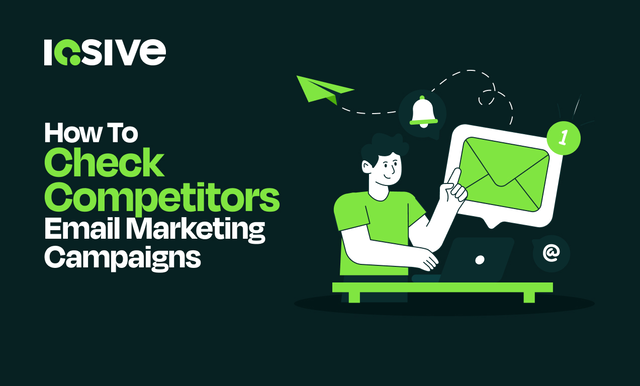Email marketing remains one of the most effective channels for customer engagement and retention. But if you’re serious about outperforming others in your industry, you can’t work in isolation. Understanding how competitors design, segment, and deliver their email campaigns provides valuable insights to refine your own strategy. This guide explores proven methods for ethically analyzing competitor email marketing, the tools that can help, and actionable steps you can take to strengthen your campaigns.
Why Analyzing Competitors’ Email Marketing Matters
Competitor analysis in email marketing isn’t about copying, it’s about learning. By observing how others engage their audience, you can:
- Identify emerging trends in subject lines, content formats, and personalization.
- Benchmark your performance against industry standards.
- Discover gaps in messaging or targeting where your brand can stand out.
- Reduce trial and error by seeing what resonates with similar audiences.
According to a 2023 HubSpot report, businesses that regularly review competitor strategies are 2.3x more likely to achieve above-average ROI in their email marketing.
Identifying Your Top Competitors in Email Marketing
Before analyzing campaigns, clarify who your true competitors are. These aren’t just the brands you know, they are the businesses that target the same audience with similar products or services.
Start by:
- Listing direct competitors in your niche.
- Searching industry keywords to see which brands appear in both paid and organic results.
- Monitoring online forums, review sites, and social media to identify frequently mentioned companies.
Once defined, focus your analysis on the top five to ten competitors most relevant to your audience.
Methods to Access Competitors’ Email Campaigns
Signing Up for Competitor Newsletters
The simplest way to monitor competitors is to subscribe to their email lists. Use a dedicated inbox to track frequency, subject lines, and styles without cluttering your personal email. Over time, this builds a library of competitor strategies you can analyze.
Using Dedicated Email Intelligence Tools
Platforms like MailCharts, Owletter, and SimilarWeb Email Outbox offer curated libraries of competitor emails. These tools reveal trends in subject lines, send timing, and design choices across industries, saving you the manual effort of tracking everything yourself.
Tracking Campaigns Through Social Media & Websites
Many brands share email content on social media or archive newsletters on their websites. Reviewing these posts can provide insights into campaign messaging and timing, even if you’re not on their email list.
Key Elements to Analyze in Competitor Emails
Subject Lines and Preview Text
Subject lines determine whether emails get opened. Study your competitors’ use of urgency, personalization, emojis, and curiosity-driven hooks. For example, “Your exclusive deal ends tonight” uses urgency, while “We picked these just for you” suggests personalization.
Email Design and Layout Choices
Pay attention to templates, use of visuals, and mobile responsiveness. A competitor heavily using bold CTAs and short-form copy might be targeting a mobile-first audience.
Content Style and Messaging Strategy
Look at tone (casual vs. professional), length, and value-driven content. Do they focus on discounts, storytelling, or educational resources? This helps you identify gaps in your own messaging.
Personalization and Segmentation Tactics
Examine whether emails are segmented (e.g., abandoned cart reminders, location-based offers). Personalized strategies often reflect deeper CRM integrations, which can improve engagement rates.
Frequency and Timing of Email Sends
Are competitors sending daily, weekly, or monthly? Do emails arrive at specific times (e.g., mornings or weekends)? Identifying send frequency and timing patterns helps you benchmark your cadence.
Tools for Competitor Email Campaign Analysis
Free Tools to Track Email Marketing Strategies
- Owletter (basic plan): Archives competitor newsletters.
- Wayback Machine: Access archived landing pages linked from emails.
- Google Alerts: Track when competitors announce promotions tied to email campaigns.
Advanced Paid Email Intelligence Platforms
- MailCharts: Provides historical email campaign data and industry benchmarks.
- SimilarWeb Email Outbox: Tracks global competitor email performance.
- Litmus: Offers analytics on design trends and deliverability benchmarks.
Investing in these tools can save time and provide more accurate data than manual tracking alone.
How to Benchmark Against Competitors
Identifying Strengths and Weaknesses
Compare your email performance (open rates, click-through rates, conversions) with competitors’ apparent strategies. For example, if their subject lines consistently drive engagement, consider testing similar formats.
Spotting Content and Engagement Gaps
Look for areas competitors overlook. If no one provides educational content, position your brand as the go-to expert. Filling these gaps differentiates your campaigns.
Building a Competitive Advantage
Once you identify gaps, turn insights into opportunities:
- Test different send times.
- Experiment with storytelling or long-form content.
- Offer unique personalization strategies competitors aren’t using.
Ethical Considerations in Email Competitor Research
While competitor research is vital, it must remain ethical. Never attempt to hack, scrape private data, or impersonate customers. Instead, rely on publicly available campaigns, legal tools, and subscriptions. Ethical practices not only protect your brand reputation but also ensure compliance with data privacy laws like GDPR and CAN-SPAM.
Actionable Steps to Improve Your Own Campaigns
Once you’ve gathered insights, put them into practice:
- Create a competitor swipe file to store inspiration.
- Use A/B testing to experiment with subject lines, designs, and send times.
- Focus on gaps competitors leave, whether it’s content quality, segmentation, or storytelling.
- Measure results consistently and adjust based on performance.
By turning competitor research into action, your campaigns evolve into strategic, customer-centric communication that builds loyalty and drives revenue.
FAQs:
Q1: How can I legally check competitors’ email marketing campaigns?
You can legally subscribe to their newsletters, monitor public archives, and use approved email intelligence tools. Avoid unauthorized scraping or data theft.
Q2: What tools are best for analyzing competitor newsletters?
Popular options include MailCharts, Owletter, and SimilarWeb Email Outbox. These tools provide historical data, subject line analysis, and industry benchmarks.
Q3: Can I see the frequency of emails my competitors send?
Yes. By subscribing to competitor newsletters or using tracking tools, you can log how often and when they send campaigns.
Q4: How do I find out if competitors use segmentation in emails?
Look for personalized elements like product recommendations, location-based offers, or behavior-driven follow-ups (e.g., abandoned cart emails).
Q5: Is it worth paying for competitor email intelligence tools?
If email marketing is a core channel, yes. Paid tools offer broader data sets and insights you can’t easily replicate manually.
Q6: How do subject lines in competitor emails affect open rates?
Subject lines strongly influence open rates. By studying competitors, you can identify patterns in wording, length, and emotional triggers.
Q7: What’s the easiest way to benchmark my email campaigns against competitors?
Track open rates, click-through rates, and engagement trends against what competitors appear to be achieving in their campaigns.
Q8: Can I track the design trends my competitors use in email marketing?
Yes, By reviewing their emails and using design analysis tools like Litmus, you can spot trends in layout, CTAs, and mobile optimization.









